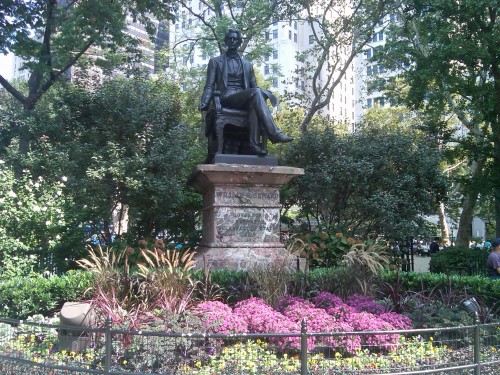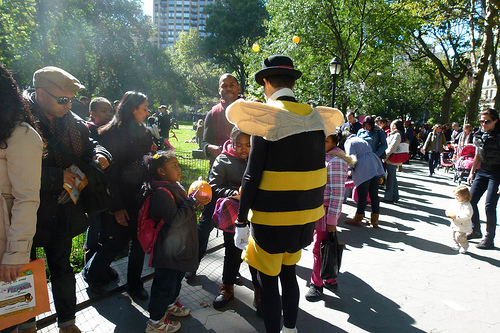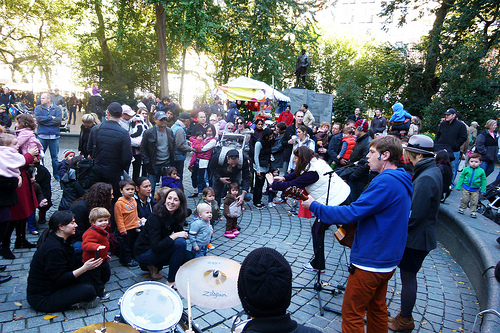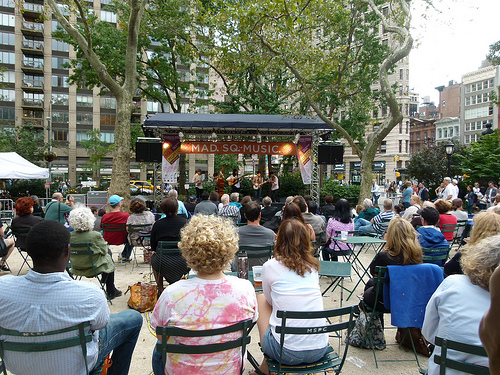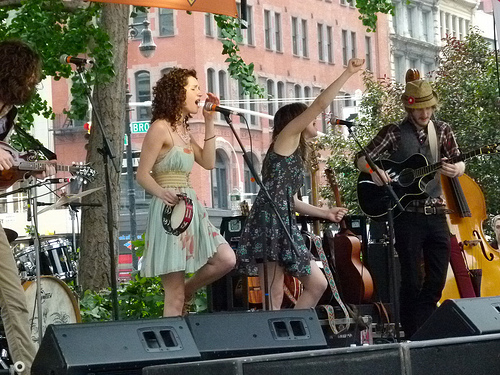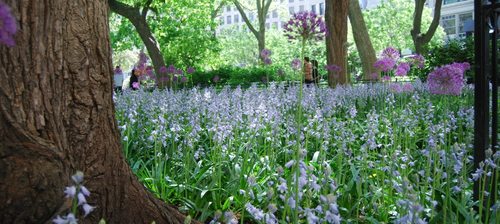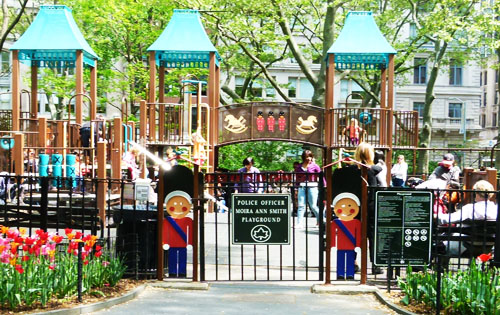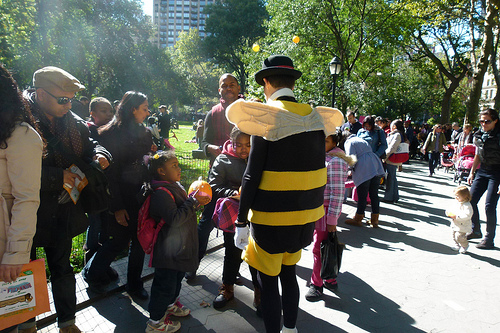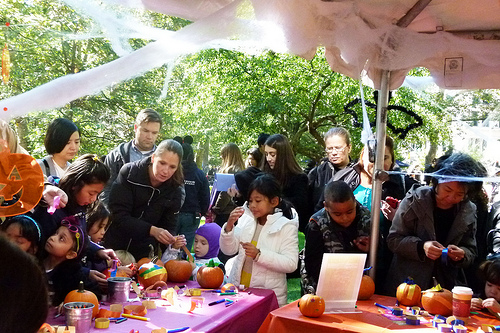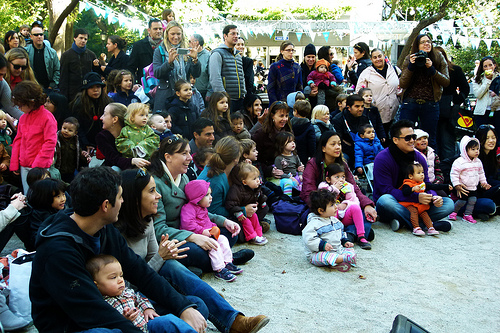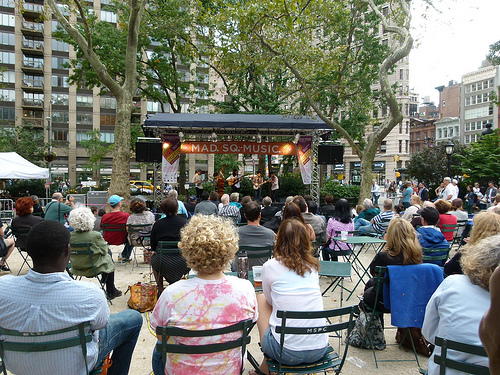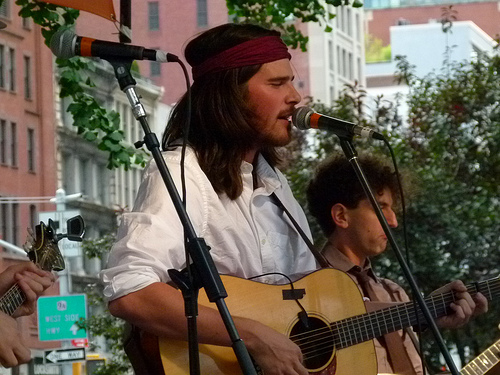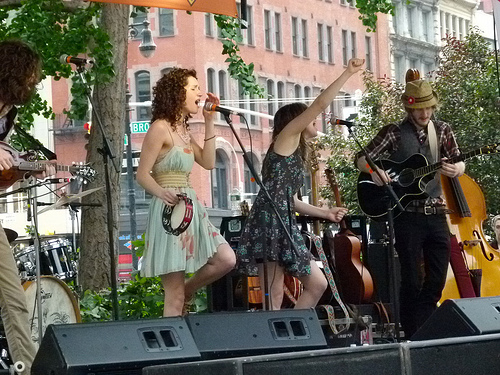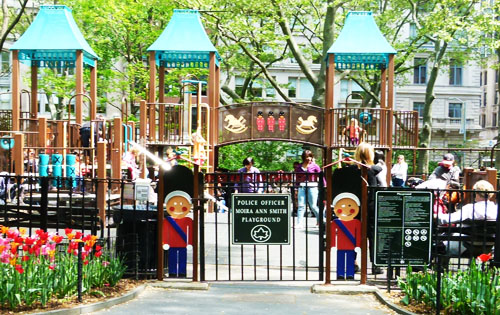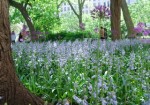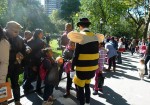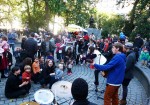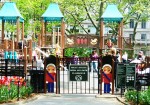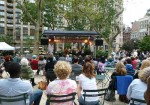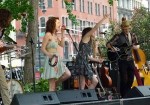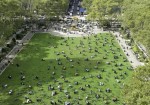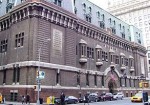The area known as Madison Square Park has existed as an urban public space since 1686. Named for James Madison, fourth President of the United States, Madison Square was formally opened as a public park in 1847. Soon after the creation of New York City’s first Department of Public Parks in 1870, the square was re-landscaped by William Grant with Ignatz Pilat, the department’s chief landscape architect and a former assistant to Frederick Law Olmsted in the design of Central Park. The park incorporated both formal and pastoral elements with well-defined walkways and open lawns similar to the park plan we know today.
In the late 19th century, Madison Square was the focal point of one of Manhattan’s most elite neighborhoods. Society’s most fashionable residences and hotels, including the luxurious Fifth Avenue Hotel, bordered the park. Novelist Edith Wharton was born to a well-to-do New York family nearby on West 23rd Street. Tycoon Leonard Jerome, the grandfather of Winston Churchill, built the most elaborate mansion alongside the park at Madison Avenue and 26th Street. The neighborhood surrounding the park also flourished as a bustling commercial district, home to wonders like Barnum’s Hippodrome, the first and second Madison Square Gardens, the daringly narrow Flatiron Building and the Metropolitan Life Insurance Building.
Despite its prominent location and cultural significance, by the 1990s the park had fallen into disrepair. The park’s asphalt was cracked and broken, its grassy lawns eroded and sparsely planted. The eight prized monuments were in decay. The historic plan and formal character were overwhelmed by visual clutter. Insufficient lighting and confusing signage gave the park an unsafe and disorienting feeling.
In response to this problem, the City Parks Foundation took the lead in organizing the Campaign for the New Madison Square Park, the precursor organization to the Madison Square Park Conservancy. The campaign raised six million dollars for capital renovation of the park, including $2.5 million in private funds from corporate leaders, such as Metropolitan Life Insurance Company, New York Life Insurance Company, Credit Suisse First Boston, Rudin Management, and Union Square Hospitality Group. The Madison Square Park Conservancy has also raised $4 million for a permanent fund to help support maintenance of the park.
The renovation restored elements of the park’s original 19th-century design by Ignatz Pilat and William Grant, while helping to make the park once again a center of neighborhood life. The restored park features lush green lawns, colorful flowering shrubs and plants, World’s-Fair-style benches, a spectacularly restored fountain, a contemporary reflecting pool, new gateways, new paving and ornamental lighting.
Today, Madison Square Park is at the heart of a revitalized business district, bordered by office buildings, retail establishments and restaurants. The restoration of the park has also spurred new residential development, welcoming a new generation of young park users.
Some fun facts about Madison Square and Madison Square Park:
* Many believe that Madison Square Park is the birthplace of baseball, since Alexander Cartwright formed the first baseball club, the New York Knickerbockers, here in 1845. In 1873, P.T. Barnum began hosting his circus in an abandoned railroad depot just north of Madison Square.
* The same block to the northeast of the park (the east side of Madison Avenue between 26th and 27th streets) was home to the first (1876-1889) and second (1890-1925) Madison Square Gardens.
* Beginning in 1876, the arm and torch of the Statue of Liberty were displayed in Madison Square Park for six years to raise funds for construction of the statue and base.
* In 1889, two temporary arches were erected over Fifth Avenue at 23rd and 26th streets for the centennial celebration of George Washington’s first inauguration. The original Washington Square Arch was built at the same time lower on Fifth Avenue.
* In 1908, the New York Herald installed a giant searchlight among the girders of the Metropolitan Life Building in construction, directly across from the park, to signal election results. A northward beam signaled a majority for Republicans. A southward beam signaled a majority for Democrats. The beam went north – and Republican William Howard Taft became president.
* At the time of its completion in 1909, the Metropolitan Life Insurance Building was the tallest in the world.
* America’s first community Christmas tree was illuminated in Madison Square Park on Christmas Eve 1912.
* On Armistice Day, November 11, 1923, the Eternal Light Monument was dedicated in Madison Square Park to commemorate the return of United States Army and Navy troops from World War I. In September 2002, after a major restoration, the Eternal Light Star was reinstalled thanks to the support of ConEdison, New York City/Parks & Recreation and Sentry Lighting.

